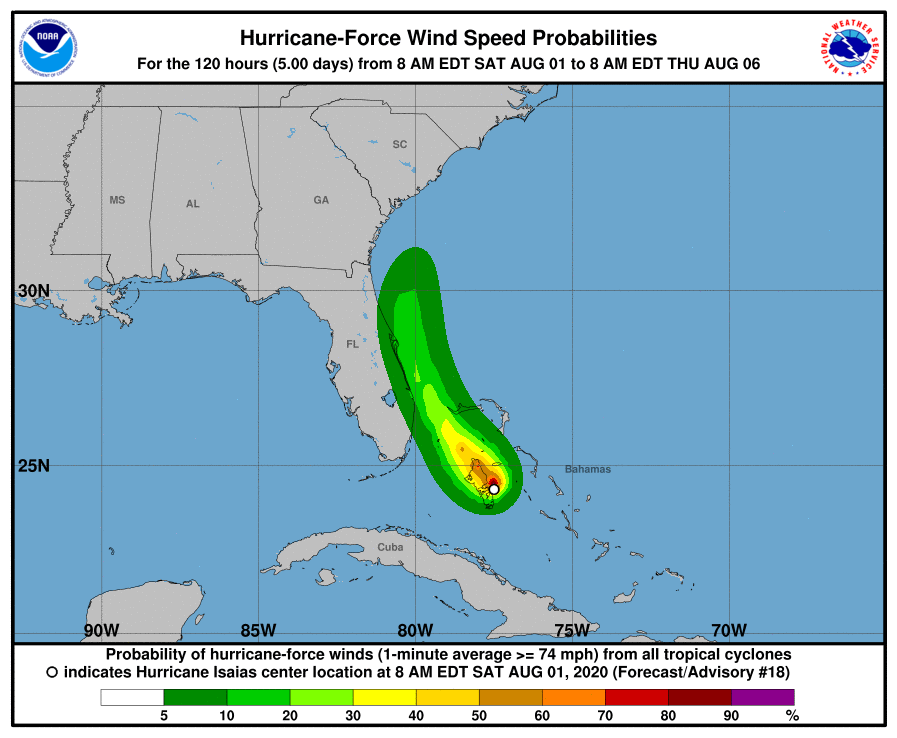Southeast Florida Dodges the Worst of Hurricane Isaias
Saturday, the first day of August, dawned bright and beautiful; the sun was in full force without a cloud in the sky. By the time the National Hurricane Center issued its 2pm advisory, it was clear that we would be spared the worst of the storm.
Needless to say, being hurricane-ready is always critical here in South Florida, particularly during a pandemic.
Isaias, the Spanish word for “Isaiah”; seemed so difficult for people to pronounce (it’s pronounced “ess-ah-EE-ahs”, by the way) that the National Weather Service tweeted a video showing how to pronounce it.
Where Do Storm Names Comes From?
In case you were wondering, beginning in 1953, Atlantic tropical storms were named from lists originated by the National Hurricane Center. Now, however, they are “maintained and updated through a strict procedure by an international committee of the World Meteorological Organization.” The list currently includes names through the 2025 storm season.
The World Meteorological Organization (WMO) implemented its Tropical Cyclone Project in 1971, prompted by a United Nations General Assembly resolution. You can read more about the WMO here: https://public.wmo.int/en.
The 1970 Bhola Cyclone Changed the Course of History
The 1970 Bangladesh cyclone provided the impetus for the Tropical Cyclone Project. According to Hurricane Science, “Although meteorologists knew of the approaching storm, there was no way to communicate to most of those living in the coastal plain and on the islands of the Ganges River delta. As a result, approximately 300,000-500,000 people were killed (many had been asleep when the storm surge struck), making this storm the deadliest tropical cyclone of all time and one of the deadliest natural disasters in recent history.”
The Bhola cyclone had many far-reaching effects beyond the casualties. According to arcgis (a program administered by the Environmental Systems Research Institute), the Bhola Cyclone “set off a chain of events that in the end started a civil war, created the state of Bangladesh, and created the organization Doctors without Borders.”
Preparing for Storms on the Home Front

Today, scientists know much more about storms, and our ability to share critical information in advance of storms is far better than in 1970. Hurricane preparation is crucial for health and safety, and many reliable resources are available to help you get started:
- The City of Tamarac has a great Emergency Management page, here: https://www.tamarac.org/1021/Emergency-Management.
- You can also visit Broward County’s hurricane preparedness page; it includes a list of hurricane shelters as well as links to preregistration for special needs populations.
- “Ready,” a national public-service campaign launched in 2003, contains a wealth of information and resources for dealing with disasters, from pandemics to hurricanes to extreme heat and more. It includes a list of basic disaster supplies in printable format.





